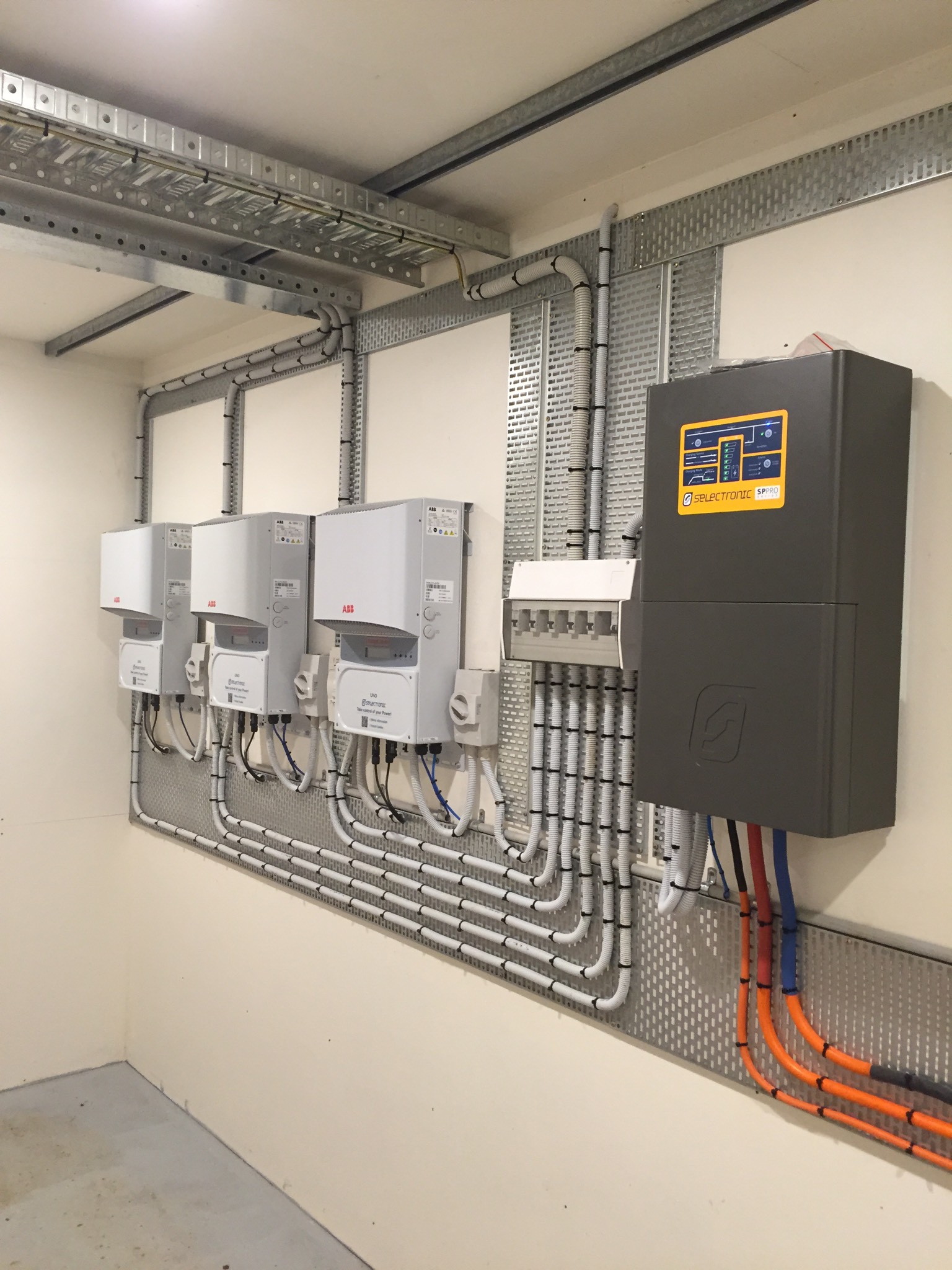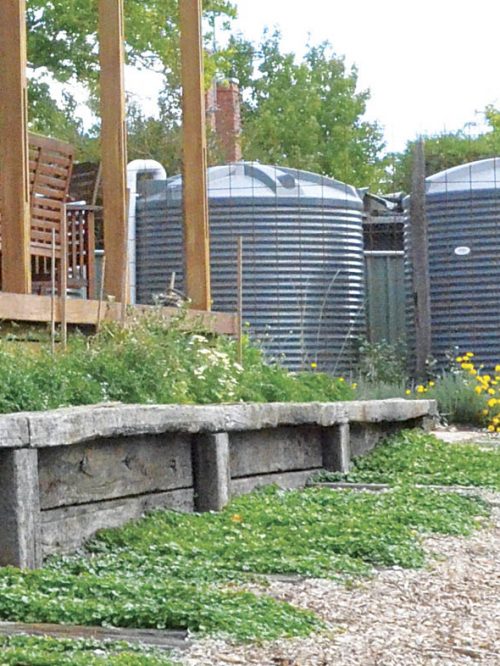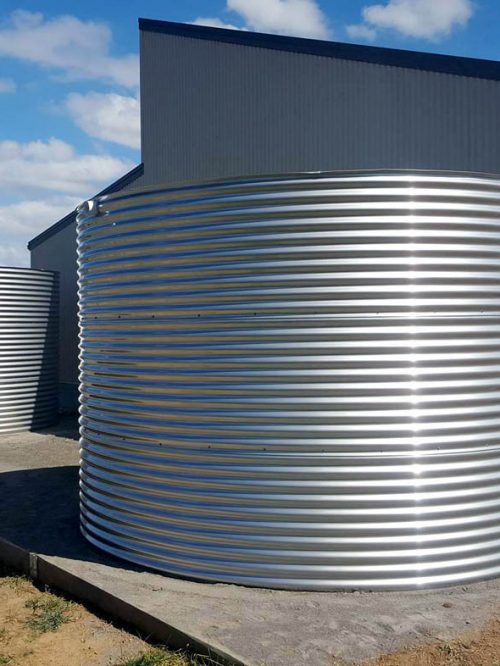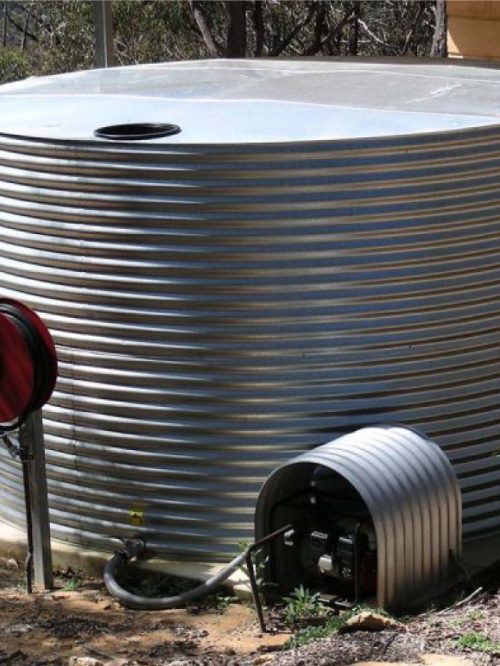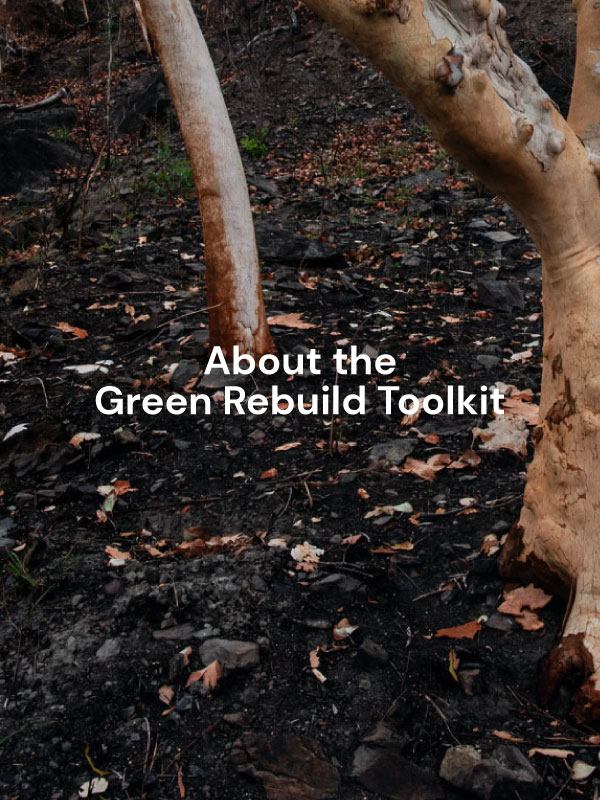With reducing grid reliability and steadily increasing electricity prices there’s been renewed interest in giving energy companies the flick. Lance Turner takes a look at the how and why of going off-grid.
This article was first published in Issue 128 (July-Sept 2014) of Renew magazine. Please note that the market is changing rapidly and some details may have changed since this was originally published; it still provides useful practical information on going off-grid.
Most people never think about their electricity supply until it isn’t there. Most blackouts are short-lived events caused by car crashes or fallen tree limbs and are, at most, an annoyance. But what if your electrical supply disappeared for days, even weeks?
Anyone who has experienced a natural disaster knows that an extended power outage can have serious consequences. For instance, you might be dependent on a bore pump for your water supply or for pumps in a bushfire, or you might be in the depths of a cold winter and find yourself without heat.
Even if you are an optimist and believe that such an event won’t happen to you, there are still other reasons to get off the grid.
Energy independence
It’s not just the thought of days without electricity that makes people think about becoming their own energy generators. Another incentive is the variability of energy prices and the steady transfer of costs towards the fixed component of energy bills—so even energy-conscious people are receiving high bills.
Being responsible for your own energy also means that you are more aware of your energy use. Additionally, the sense of being independent for your energy needs and generating energy from renewable sources such as solar panels instead of using grid power from dirty generation sources can be enormously satisfying. One comment I have heard repeatedly over the years is just how good it feels to be independent of the big generators and retailers.
And, of course, for many remote properties the cost of connecting to the grid may be higher than installing even a large independent energy system. In those cases, there’s simply no reason to connect to the grid.
There are some disadvantages to being off-grid. The most obvious is that you can only use the energy available from your generation system. Use too much and your system will run down and simply shut down from low battery voltage. If you have a backup source of energy such as a petrol, diesel or even steam-powered generator, then you are truly independent.
There is also the system maintenance required, such as battery electrolyte level checking, although with sealed batteries this chore has disappeared. Modern systems can have very low maintenance requirements until the components reach end of life.
One point to note is that you can legally disconnect your mains-connected house from the grid without having to pay any further service fees. You just call your electrical retailer and ask for a disconnection, although you may need to give a reason, such as renovating or moving out, to avoid them arguing the point.
EXPERT FEATURE
Words: Lance Turner
First published in Renew 128
Balthayock is an off-grid property and self-sufficient new build on 75 acers with views over the Yarragon Township. Learn more about the house and the off-grid set-up at the Sustainable House Day website.
The three parts: generation, storage and conversion
Almost all independent energy systems have three basic sub-systems: energy generation, energy storage and energy conversion.
Generation includes photovoltaic (solar) panels, wind and water turbines and generator sets.
Storage is almost always in the form of a battery bank—be it flooded lead-acid, sealed lead-acid or lithium (there are some other chemistries, but these are the most common). [Note: more recently, several other technologies are becoming real contenders; read more in ‘The lowdown on battery technology’ in Renew 137.]
In AC coupled systems, all energy inputs and outputs are done on the 230 VAC bus. Energy from the solar array is immediately converted to AC and fed into the bus. The inverter/charger controls all flows of energy into and out of the battery and into the home for use in appliances. Extra charging sources are simply coupled onto the AC bus. AC coupled systems can reduce cabling costs as no heavy DC cables are required. However, should the inverter/charger fail, the whole system ceases to function. For more on this, see “AC vs DC coupling” in ReNew 130, and the inverter buyers guide in ReNew 137.
With a DC coupled system, there will be a charge controller that controls the energy flow into the battery bank from the solar array and prevents battery overcharging. If the battery is a lithium chemistry, it will have a battery management system (BMS) that may be part of the battery itself, or may be external to the battery and replace the charge controller. In AC coupled systems there is no separate charge controller; battery charging is controlled by the inverter/charger.
Energy conversion occurs differently in DC and AC coupled systems. In DC coupled systems, there may be no conversion at all (using energy straight from the battery bank in DC appliances) or it might use an inverter to convert the DC from the batteries to 230 VAC for conventional appliances. In an AC coupled system, the PVs feed at least one grid-interactive inverter that converts the DC from the panels to AC; an inverter/charger then controls the flow of energy into the house and into/out of the batteries.
For systems using an inverter, it is common for the inverter or system control gear to sync backup sources such as gensets to the inverter output, so that the changeover to supplementation from backup sources is completely transparent—the system operates just like you are running from the mains grid.
WATCH
Toolangi Forest Off-grid House is powered by 12kW pv panels, supported by 1500AH batteries at 48V and 7.5kW inverter. It is also rated BAL 40. This video details the house and the off-grid set-up, and was made as part of Sustainable House Day 2020.
Doing it
So, you’ve weighed up the pros and cons and have decided that going off-grid is right for you, but you’re not sure what the next step is.
Energy auditing
Firstly, you must know your entire energy requirements, including any water pumping systems, and you need to know how those requirements vary throughout the seasons. For instance, in cold climates, energy use tends to climb in winter as water heating requires more energy to reach required temperatures and many people will use electrical heating for devices such as electric blankets, small personal heaters and the like.
Water heating is often done using gas or solid fuel boosted solar, but it’s not unreasonable to use a high efficiency heat pump (or an electric-boosted solar system, depending on your location) for hot water. Resistive heating is very energy hungry and not suitable for use with an off-grid system unless the system has a lot of excess capacity.
Provided the performance issues of the house envelope (insulation, draught sealing etc) have been addressed, it is possible to use high efficiency reverse-cycle air conditioning for heating and cooling. However, it is very important to know how much energy an air conditioner is likely to use, and to allow for that extra generation required when sizing the system—especially the solar array, and especially for the winter months.
Electric cooking is also possible, at least for the cooktop, but again, you must have a realistic estimate of the energy required, especially in winter when more meals are cooked. Lighting loads also increase in winter due to the longer night-time hours, so all of this needs to be understood and allowed for.
Sizing
If you plan to have no genset backup (and with the low cost of solar panels, more systems are being oversized purely for this reason) then your system must be able to provide the highest likely loads for extended periods of low solar input without excessively discharging the batteries. The system size will depend on your loads and geographical location and typical local weather patterns and is beyond the scope of this article, but these factors must be calculated if your system is to be successful. One thing you may want to consider is optimising solar panel tilt for maximum winter output, particularly when you’re building a new house and can adjust the roof design.
For help on sizing your battery bank, see the battery sizing article in ReNew 123 or talk to a qualified renewable energy designer/installer.
Many people actually adapt to their system’s capabilities, rather than expecting the system to be able to provide all needs at all times—if the batteries are running low, owners with such attitudes will simply go into energy conservation mode, using fewer appliances until available energy improves. It’s actually not as scary as it sounds, and gives you an appreciation of the energy you use.
Custom design or off-the-shelf?
There are two ways to design a system. The first is a completely customised system using individual components, all sized to suit your needs. The installer then assembles the system on-site or may pre-assemble some sections such as the power panel (which will usually contain the switchgear, circuit breakers and other smaller components).
The other method is selecting an off-the-shelf ‘system in a box’ which may contain everything required except the generation source. The box is installed on-site, the PV panels or other generator installed and connected and the system is ready to go.
The latter method only works if your requirements fall fairly closely within the parameters of a particular pre-configured unit. Some people will find their needs are easily met this way, but many people won’t and will require a fully customised system.
Many installers have pre-sized systems capable of providing a particular amount of energy per day. By pre-configuring systems they can often offer them at a lower cost than a customised system, so shop around: you might find someone offering exactly what you need.
Most people will hire a local solar installer to design a system for them, but it can be helpful to understand the reasoning behind the various aspects of the system design to avoid potential problems later on. You must make sure the installer knows about all of your energy use, including potential increases from planned appliance upgrades or regular visitors. One installer notes that you need to allow for increased usage as children become teenagers!
Once they have all the facts, the installer will probably ask you about some system specifics, such as whether you want an AC coupled or DC coupled system, which battery chemistry you want to use (many installers will only have worked with lead-acid, so you may be restricted on this), potential solar array oversizing for periods of low solar input (to reduce or eliminate the need for a backup genset) and possibly other factors. If you get no feedback from the installer, just a quote with little information, start asking questions!
Batteries: the heart of the system
It doesn’t matter how many solar panels or what other equipment you have, if your battery bank is not up to the task then the system will fall over. Assuming the system has been sized correctly, then the main battery issue is maintenance.
If you opted for a flooded cell lead-acid bank then it must be maintained correctly—checking electrolyte levels in each cell and topping them up is the main maintenance task.
Other tasks include checking connections for corrosion, but this is far less of a problem for sealed lead-acid batteries and a non-problem for lithium batteries. The latter are still not common in domestic energy systems but their long cycle life and high charge/discharge efficiency makes them attractive, and prices are steadily falling to the point where they are a real alternative to lead-acid batteries.
Depending on chemistry, battery state of charge (SOC) can be a good indicator as to how the system is performing. If the batteries are regularly hitting close to 100% SOC then the system is producing enough energy to meet demand. If the batteries regularly run for days at a time without fully charging, then energy generation may be a little low. Interestingly, for lead-acid batteries it is best if they reach full charge regularly, whereas lithium batteries are much more tolerant of partial discharge and, indeed, can actually last longer if run at slightly less than a full charge.
Lead-acid batteries shouldn’t be discharged more than 10% to 15% of total capacity per day on a regular basis. With lithium batteries you can get away with deeper discharges and hence a smaller total capacity, provided that the generation capacity is enough to ensure that the smaller bank is never discharged below the manufacturer’s recommended minimum (which can be as little as 0% SOC, or 100% discharged).
As data collection is a feature of almost all house-sized inverters as well as many charge controllers, almost all domestic-sized systems have quite extensive monitoring nowadays, including energy generated and consumed, battery voltage and SOC and the like. Keeping an eye on this information can help you get the most out of your system, and you can even have the data uploading to the popular pvoutput.org web portal.
DC or AC
Most systems usually assume a completely 230 V powered home, with energy converted from DC to AC by an inverter. Advantages of this are simplicity of wiring, but it is important to consider having a backup inverter should the main unit fail, potentially leaving you with no power—not even lights.
You might also consider one or two low-power DC circuits to provide lighting. If your needs are small, an all-DC house is possible, although cabling can become expensive due to the thicker cables required for the lower battery voltage compared to 230 V. For more information on using DC appliances, see the DC appliance guide in ReNew 126.
Is a generator needed?
Most off-grid systems include a diesel- or petrol-powered generator (often called a genset). However, with the greatly reduced price of solar panels, including a genset is unnecessary in many systems—it can be simpler and cheaper to considerably oversize the PV array so that it generates adequate energy even on overcast days. Combined with a slightly oversized battery bank or the use of lithium batteries (which can handle deep discharges more readily), an oversized array should allow you to eliminate the need for a genset. After all, producing electricity from a generator is the most expensive way to do it, when the cost of the genset, fuel and 20+ years of maintenance are factored into the equation, and it also has an environmental cost.
Something else to consider is reduced array output from bushfire smoke, which is likely to occur during a time of higher and important consumption for lights, pumps and communications. If you are in a fire-prone area then you might want to upsize the array somewhat to allow for this, or include a reliable backup genset in the system.




